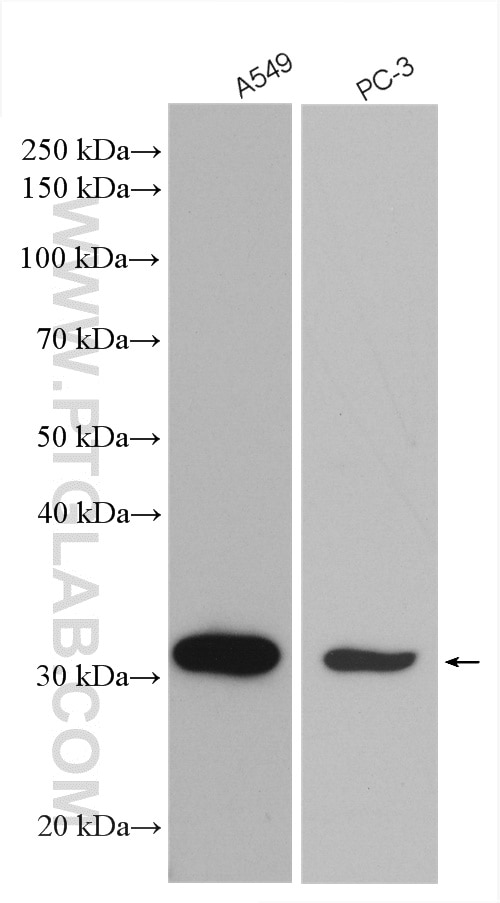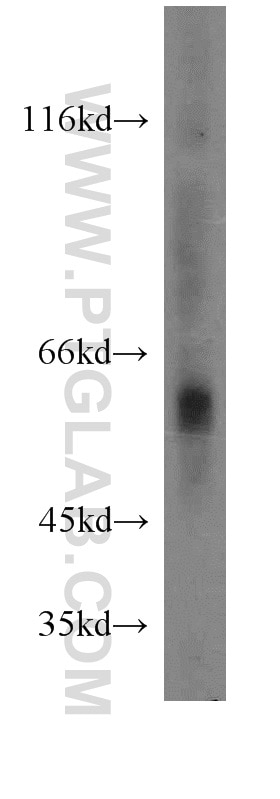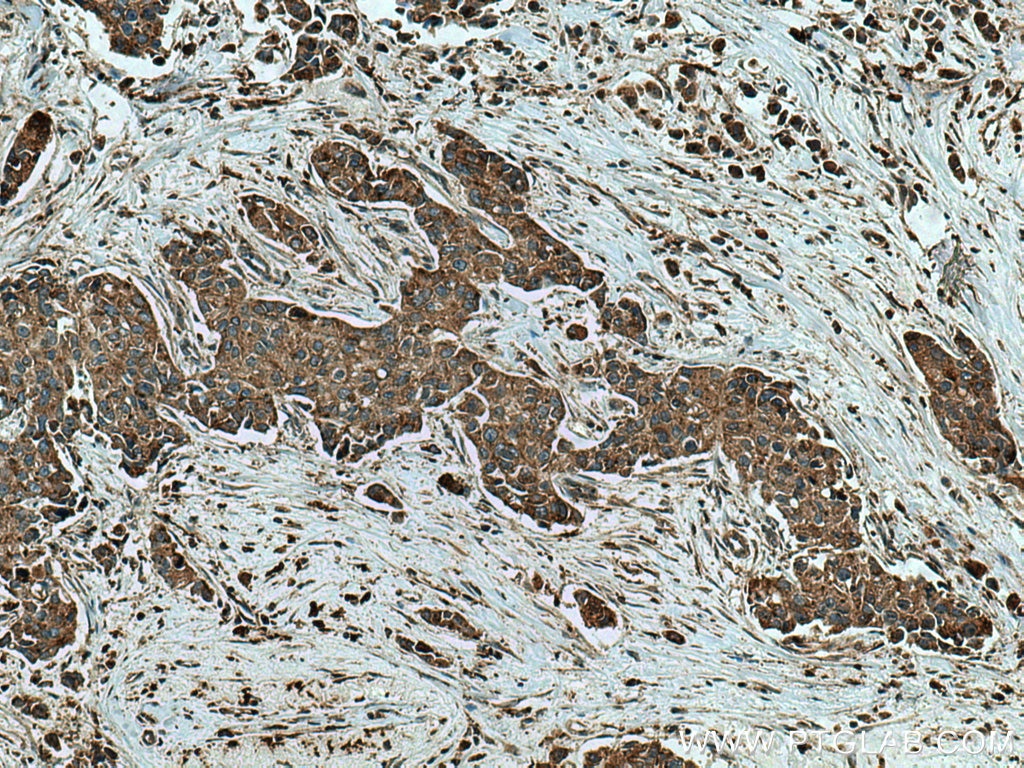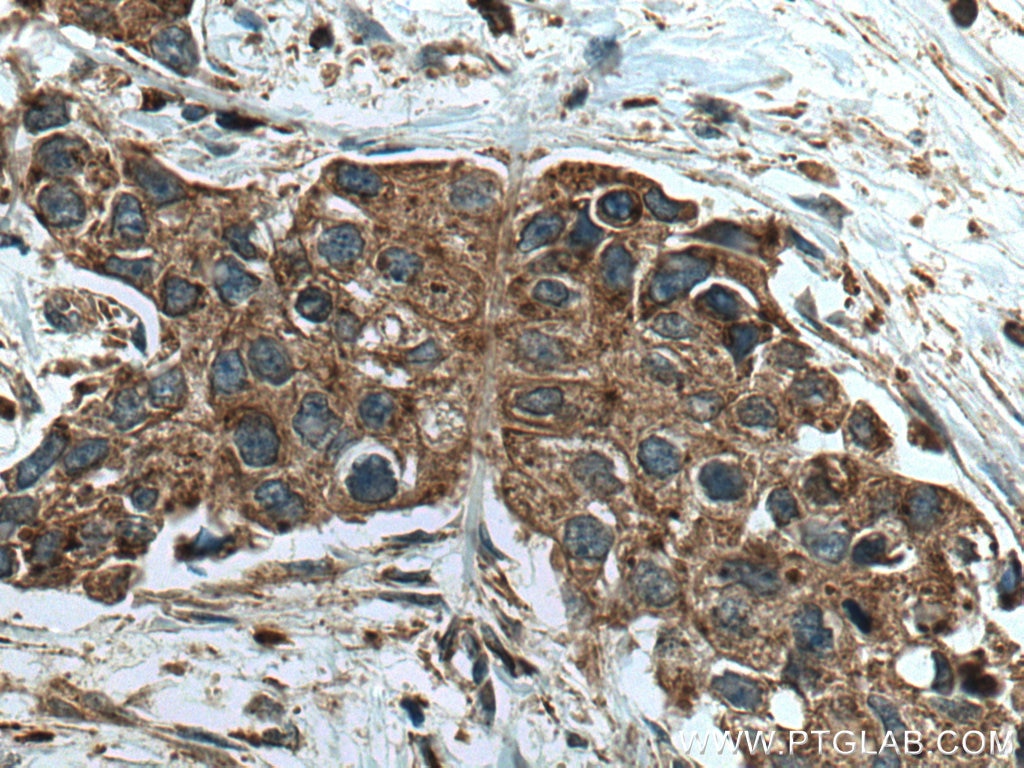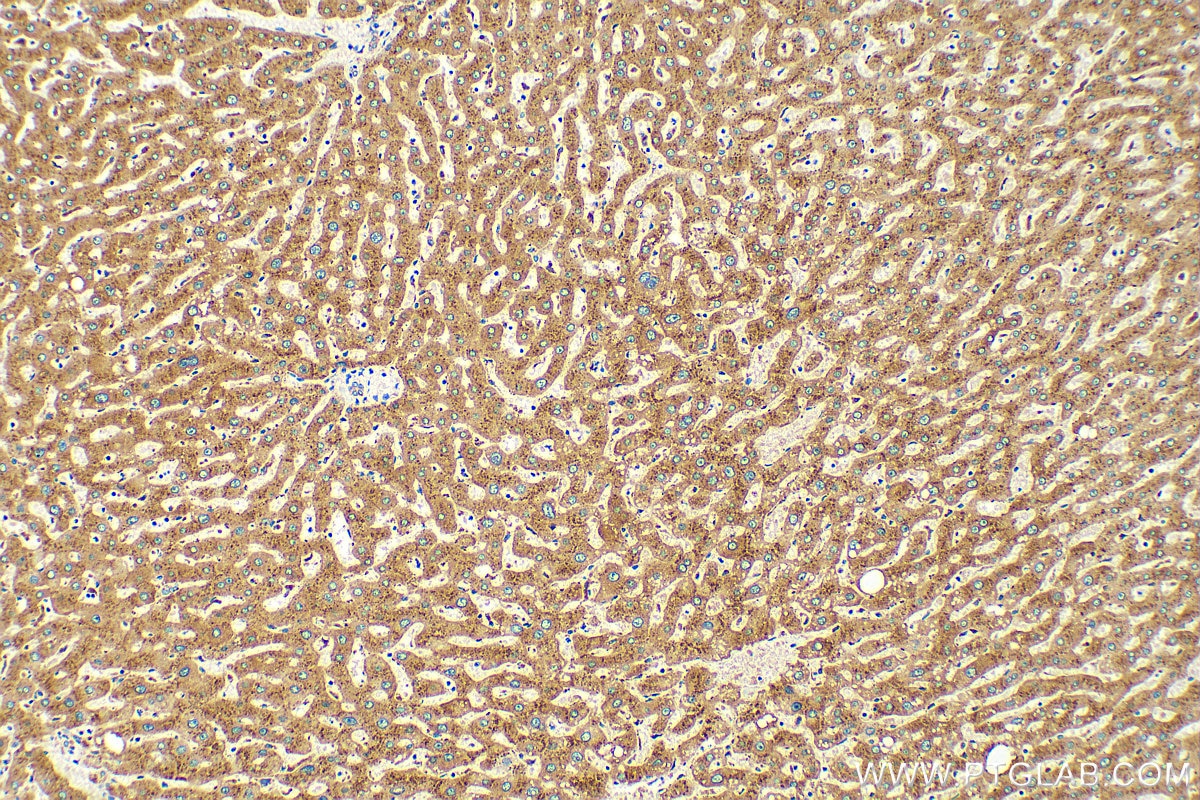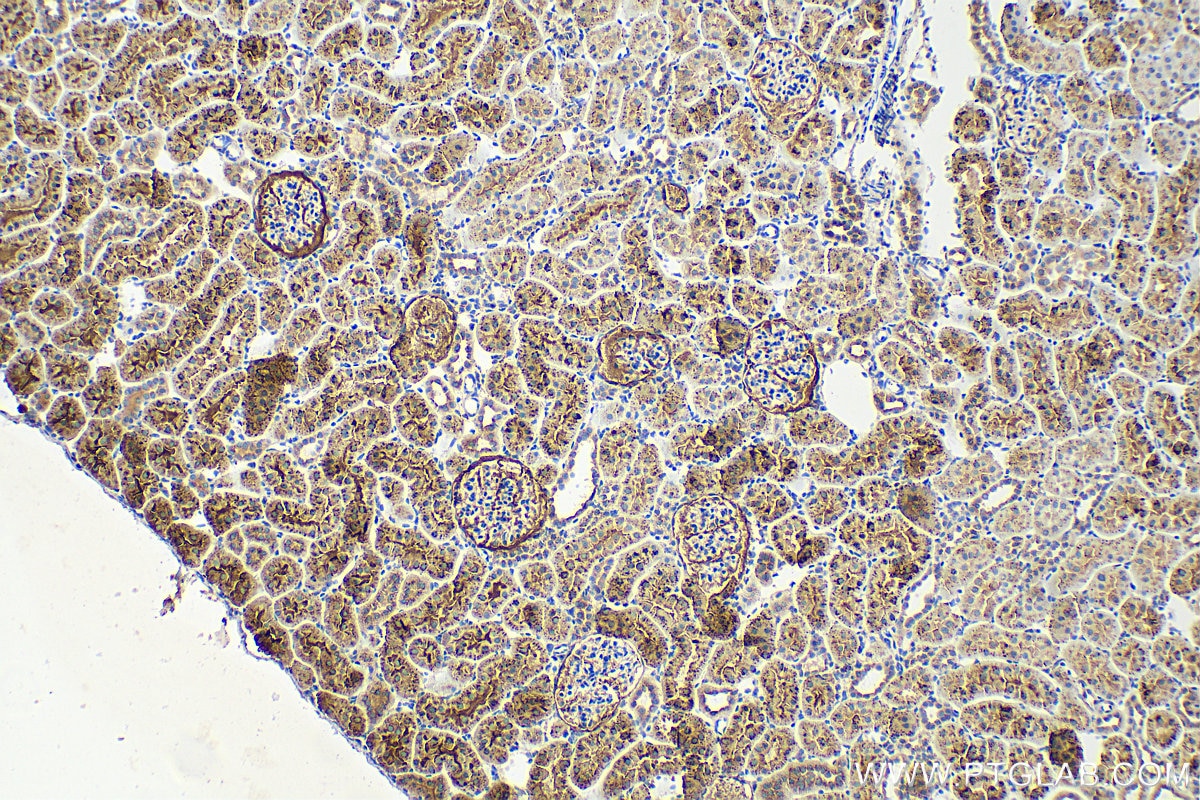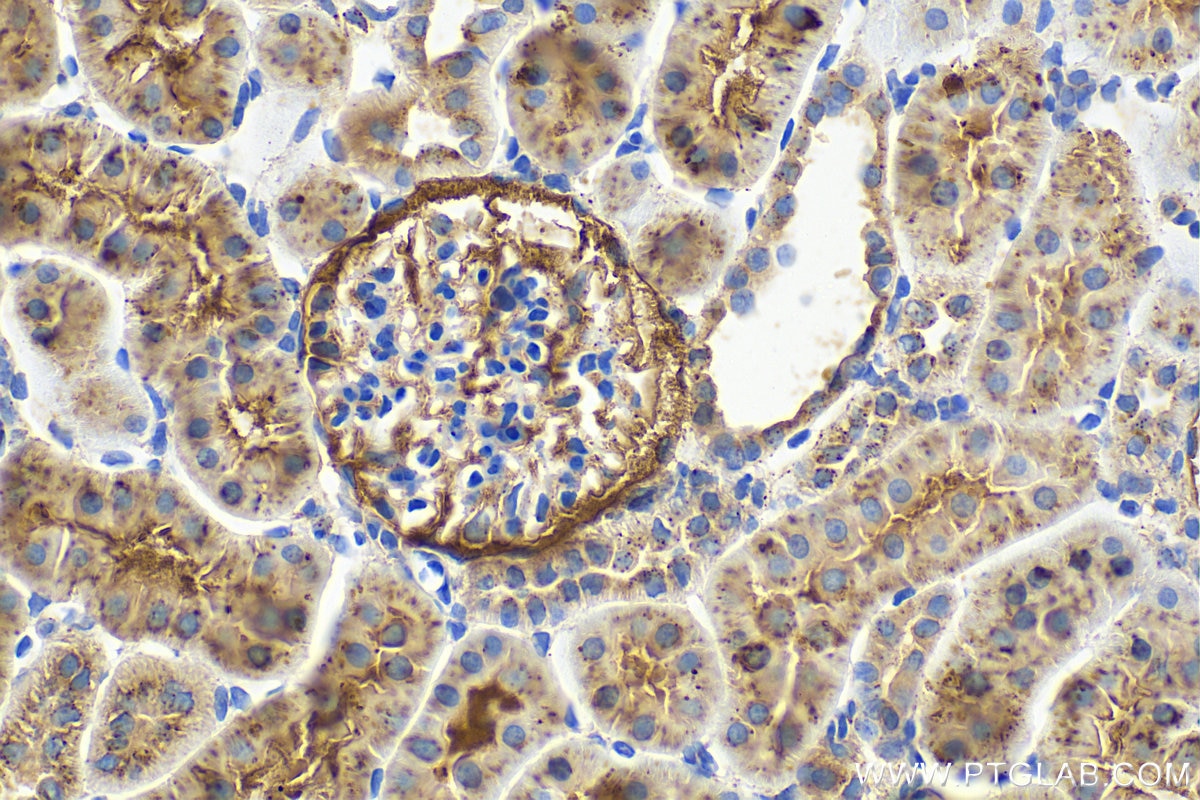Cathepsin A Polyklonaler Antikörper
Cathepsin A Polyklonal Antikörper für WB, IHC, ELISA
Wirt / Isotyp
Kaninchen / IgG
Getestete Reaktivität
human, Maus, Ratte
Anwendung
WB, IHC, ELISA
Konjugation
Unkonjugiert
Kat-Nr. : 15020-1-AP
Synonyme
Geprüfte Anwendungen
| Erfolgreiche Detektion in WB | A549-Zellen, DU 145-Zellen, PC-3-Zellen, Sp2/0-Zellen |
| Erfolgreiche Detektion in IHC | humanes Lebergewebe, humanes Mammakarzinomgewebe, Rattennierengewebe Hinweis: Antigendemaskierung mit TE-Puffer pH 9,0 empfohlen. (*) Wahlweise kann die Antigendemaskierung auch mit Citratpuffer pH 6,0 erfolgen. |
Empfohlene Verdünnung
| Anwendung | Verdünnung |
|---|---|
| Western Blot (WB) | WB : 1:500-1:3000 |
| Immunhistochemie (IHC) | IHC : 1:750-1:3000 |
| It is recommended that this reagent should be titrated in each testing system to obtain optimal results. | |
| Sample-dependent, check data in validation data gallery | |
Veröffentlichte Anwendungen
| WB | See 5 publications below |
| IHC | See 2 publications below |
| FC | See 1 publications below |
Produktinformation
15020-1-AP bindet in WB, IHC, ELISA Cathepsin A und zeigt Reaktivität mit human, Maus, Ratten
| Getestete Reaktivität | human, Maus, Ratte |
| In Publikationen genannte Reaktivität | human, Maus |
| Wirt / Isotyp | Kaninchen / IgG |
| Klonalität | Polyklonal |
| Typ | Antikörper |
| Immunogen | Cathepsin A fusion protein Ag7073 |
| Vollständiger Name | cathepsin A |
| Berechnetes Molekulargewicht | 54 kDa |
| Beobachtetes Molekulargewicht | 54-60, 32, 20 kDa |
| GenBank-Zugangsnummer | BC000597 |
| Gene symbol | Cathepsin A |
| Gene ID (NCBI) | 5476 |
| Konjugation | Unkonjugiert |
| Form | Liquid |
| Reinigungsmethode | Antigen-Affinitätsreinigung |
| Lagerungspuffer | PBS with 0.02% sodium azide and 50% glycerol |
| Lagerungsbedingungen | Bei -20°C lagern. Nach dem Versand ein Jahr lang stabil Aliquotieren ist bei -20oC Lagerung nicht notwendig. 20ul Größen enthalten 0,1% BSA. |
Hintergrundinformationen
CTSA is also named as PPGB(protective protein for beta-galactosidase), PPCA(protective protein cathepsin A), cathepsin A, carboxypeptidase C, carboxypeptidase L and belongs to the peptidase S10 family. It is a ubiquitously expressed multifunctional enzyme, with deamidase, esterase, and carboxypeptidase activities and a preference for substrates with hydrophobic amino acid residues at the P1-prime position. It can be cleaved into the following 2 chains and defects in CTSA are the cause of galactosialidosis (GSL). This protein has 2 glycosylation sites. CTSA is synthesized as a 54-kDa precursor protein and composed of 32- and 20-kDa subunits linked together by disulfide bonds(PMID: 16461364,19574551).
Protokolle
| PRODUKTSPEZIFISCHE PROTOKOLLE | |
|---|---|
| WB protocol for Cathepsin A antibody 15020-1-AP | Protokoll herunterladen |
| IHC protocol for Cathepsin A antibody 15020-1-AP | Protokoll herunterladenl |
| STANDARD-PROTOKOLLE | |
|---|---|
| Klicken Sie hier, um unsere Standardprotokolle anzuzeigen |
Publikationen
| Species | Application | Title |
|---|---|---|
J Hepatol SNX10 mediates alcohol-induced liver injury and steatosis via regulating chaperone-mediated autophagy activation. | ||
Am J Cancer Res High cathepsin A protein expression predicts poor prognosis and tumor recurrence of hepatocellular carcinoma patients after curative hepatectomy | ||
Mol Carcinog Resistance to abemaciclib is associated with increased metastatic potential and lysosomal protein deregulation in breast cancer cells | ||
Sci Rep Prognostic significance and oncogene function of cathepsin A in hepatocellular carcinoma. | ||
Front Cell Neurosci Neu1 Is Released From Activated Microglia, Stimulating Microglial Phagocytosis and Sensitizing Neurons to Glutamate. | ||
Nature Anti-tumour immunity controlled through mRNA m6A methylation and YTHDF1 in dendritic cells. |
